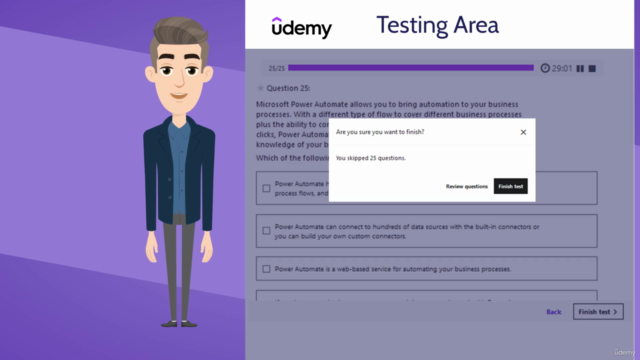Practice Exams | Microsoft PL-300: Power BI Data Analyst

Why take this course?
Based on the job description you've provided, it seems that you're looking for a Power BI Developer role that requires a comprehensive set of skills across various domains. The ideal candidate for this position should have expertise in data modeling, visualization, and analysis within the Power BI ecosystem, as well as experience with related tasks such as data import, transformation, and manipulation using DAX formulas.
Here's a breakdown of the skill sets and knowledge areas you should focus on to excel in this role:
-
Data Transformation (30-35%)
- Understand and utilize Power Query to transform data.
- Master data modeling concepts, including star schema design and dimensional modeling.
- Learn to identify when duplicate or reference queries are appropriate and understand their impact on performance and usability.
-
Data Modeling (25-30%)
- Design and implement effective data models, including configuring table and column properties.
- Implement role-playing dimensions and define relationship cardinality.
- Create a common date table and configure row-level security roles.
- Use DAX to create measures, including single aggregation measures, time intelligence measures, and semi-additive measures.
-
Performance Optimization (10-15%)
- Identify and remove unnecessary data rows and columns.
- Use Performance Analyzer to diagnose performance issues.
- Choose optimal data types for improved performance.
- Summarize data to enhance report performance.
-
Visualization and Analysis (25-30%)
- Create a variety of reports with appropriate visualizations.
- Format and configure visualizations, including applying themes, conditional formatting, and slicing/filtering.
- Utilize features like Analyze in Excel and paginated reports where appropriate.
- Enhance reports for usability, storytelling, and mobile compatibility.
- Apply AI-driven visuals and analytics to uncover patterns and trends.
-
Deployment and Maintenance (15-20%)
- Create and manage Power BI workspaces and items, including publishing dashboards and managing workspace roles and permissions.
- Configure subscriptions, data alerts, and sensitivity labels.
- Manage global file options.
- Understand semantic models and their administration, including scheduled refreshes and row-level security configurations.
-
Security and Compliance (Optional but Important)
- Ensure that reports and semantic models adhere to compliance standards and data privacy regulations.
- Provide access controls and manage user permissions effectively.
To prepare for this role, you should consider the following resources and learning paths:
- Official Microsoft Documentation: The Power BI documentation provides comprehensive guides on all aspects of the tool.
- Microsoft Learn: Offers interactive learning for Power BI, including hands-on exercises and quizzes.
- Power BI Community: Engage with the community through forums, user groups, and events to learn from real-world experiences and challenges.
- Certification: Consider obtaining a certification in Power BI or Data Analytics to validate your skills and knowledge.
- Practice: Apply what you learn by working on real datasets and creating sample reports and dashboards.
By mastering these areas, you'll be well-equipped to excel as a Power BI Developer and provide meaningful insights through data visualization and analysis.
Course Gallery




Loading charts...